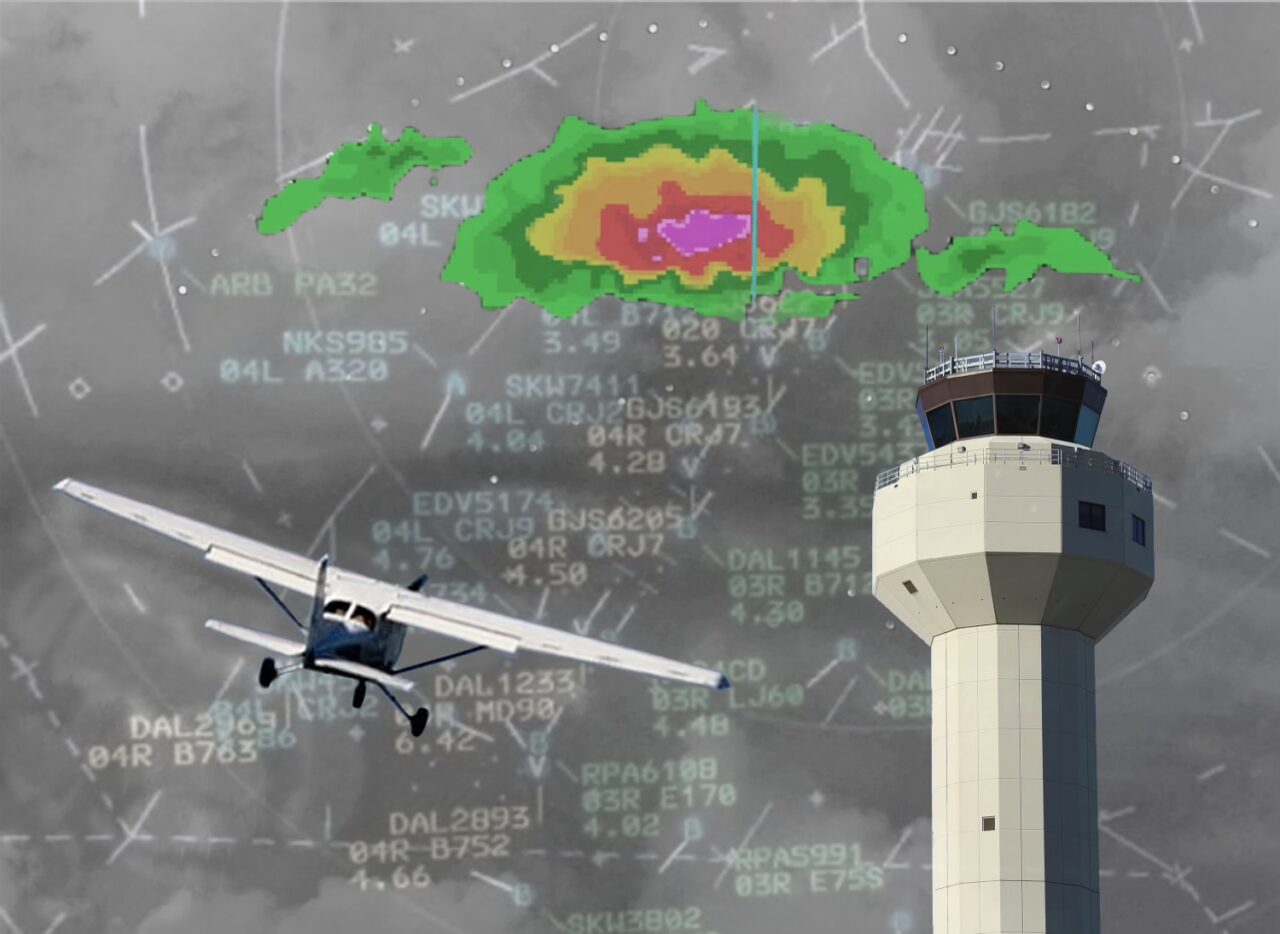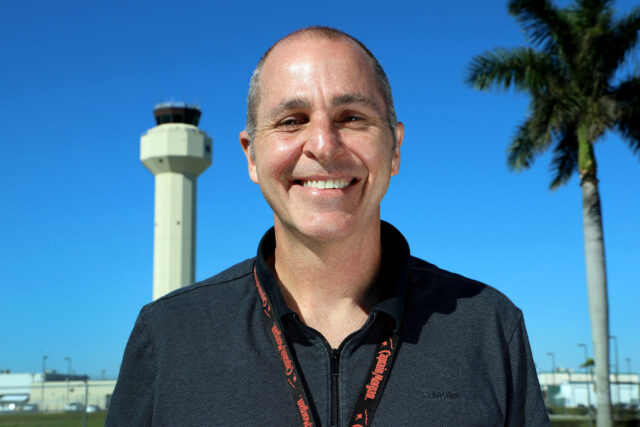
Disoriented and alone, a young pilot flying over northern Florida found himself inside thick, dark clouds in torrential rain. Panicked, he called over his radio: “Lost in weather, please! Can you see me? Can you see me?”
Over 100 miles away, a Federal Aviation Administration air traffic controller in the Jacksonville Air Route Traffic Control Center answered the pilot’s plea for help: “This is Jacksonville Center on Guard. Do you know your approximate position?”
What followed that afternoon of Nov. 24 was a desperate rescue effort that spanned 36 minutes and two dozen miles of airspace over north-central Florida to save an inexperienced pilot in a life-or-death crisis.
This reporting is based on interviews and a recording of the urgent radio communications that day, obtained from the FAA under the Freedom of Information Act. They have never been fully described until now.
It also illustrates the behind-the-scenes interchanges between pilots and controllers that play out across the U.S., often with no fanfare and out of earshot of the traveling public. To pilots, especially ones in mortal danger, air traffic controllers are voices at the end of a lifeline, saviors of the skies. On the ground, they are average people, exposed to the threat of emotional trauma and juggling high-risk problems in one of the most stressful jobs in America.
“We’re kind of the behind-the-scenes heroes that nobody knows,” said Kerri Fingerson, a Boston controller who earned a top safety award from the FAA.
About 23,000 air traffic controllers direct more than 70,000 flights daily in the U.S. to their destinations. Controllers instruct pilots at every stage of flight from takeoff to cruising to landing — sometimes dealing with life-or-death emergencies, even talking with pilots moments before they crash.
Commercial jet travel is safer than ever, but the picture isn’t nearly the same among general aviation pilots. It’s a broad category covering recreational flying, flight training, medevac operations and even firefighting and banner towing. Over the last decade, there have been nearly 1,000 accidents each year — and scores of deaths — involving private pilots and their passengers, according to the Aircraft Owners and Pilots Association, the Frederick, Maryland-based trade association that advocates for general aviation.

Adrien Valentine, 21, of Melrose, east of Gainesville, was the young pilot who was lost over Florida. He called out for help about 45 minutes into his flight from Kissimmee, near Orlando. Valentine dreamed of becoming a commercial pilot and had worked at Gainesville’s airport refueling and handling small planes and jets.
The controller in Jacksonville gently directed him with a measured and encouraging voice. He reassured Valentine that he had personally experienced such frightening whiteout conditions: “I want you to know, I’m a pilot, too,” he said. “I’ve been in the same situation, and I know it’s a little bit scary but we’re going to get you through it. You’re doing a great job, just keep listening to what we’re telling you.”
Scores, even hundreds, of other pilots and aviation enthusiasts monitoring the Guard frequency in the region heard every word during the drama, from beginning to end. At times over the radio, pilots admonished each other to avoid talking, so that the pilot in trouble had the controller’s full attention.
After the ordeal, the actions of the controller earned wide praise. Veteran pilots said he did everything possible.
The identity of the stalwart controller remains a mystery, for now. The FAA and the controller’s union declined to name him or permit him to participate in news interviews until the National Transportation Safety Board, the federal agency that investigates such cases, publishes its final report on the matter. Its full report could come as soon as five months from now.
At one point, Valentine — feeling dizzy and with no points of reference outside his cockpit except storm clouds for miles in every direction — literally didn’t know which way was up. He shouted into his radio, “I am upside down, I believe! I do not know where I am!”
The controller calmly answered, “You’re not upside down. I’m showing your altitude is level. If you were upside down, you’d be falling,” he said. Let’s just take a real deep breath. It looks like you’re doing OK. I show you’re leaving 2,400 (feet) at this time. It looks like you’re tracking straight north right now. Let’s just hold the aircraft in its attitude right now, and we’ll work on that.”
Valentine had purchased the four-seat plane, built in 1964, two weeks earlier. He said over the radio that the turn coordinator and attitude indicator failed, but it wasn’t clear whether he was unfamiliar with its cockpit or confused with panic.
Valentine was a certified private pilot but had only about 66 hours of flying experience. When he took off that afternoon, he had just one hour of experience using his instruments. He did not have an instrument rating, an additional, optional certificate for private pilots that enables them to fly in low visibility, when weather may disorient a pilot so severely that they can’t rely on their physical instincts to fly.
A 1991 study by the University of Illinois — still cited in aviation circles — estimated the life expectancy for pilots in such scenarios at 178 seconds before they spiral to their deaths.
“In any kind of stressful situation, the way you say things matters,” said Christopher “Chip” Flores, 40, of Fort Pierce on Florida’s east coast. He worked as an FAA air traffic controller at Treasure Coast International Airport.

Flores won a top FAA safety award last year for helping save the lives of a pilot and two passengers in May 2022, after the pilot collapsed unconscious during a trip to Florida from the Bahamas. A passenger landed the plane safely.
“You always have to have kind of a calm tone of voice,” Flores said. “They can hear over the frequency if you’re getting emotional and that’s going to make them emotional and not be able to perform.”
Another pilot saved by controllers, Cathy Lewan, 65, of Madison, Georgia, said the comforting voice and clear instructions reassured her when the throttle on her small Cessna 172-S malfunctioned during a flight in February 2016. Controller Mason Braddock in the FAA approach control in Peachtree City helped her land safely.
“It can be very ominous and overbearing when you’re in the midst of a lot of chaos and you have just some voice on the other end,” she said. “But when you’re in a crisis and you can feel that that’s a person on the other end working with you — I felt that the entire time. It was very comforting.
Over the radio that day, her voice breaking, Lewan asked Braddock to call her husband and pray for her: “His name is Roland, and if you could ask him to put a prayer chain out to my church and ask the whole church to start praying, and everybody else that’s listening,” she said.
Braddock reassured her: “We’re going to call him right now for you, and we’ll make sure everyone knows we’re taking good care of you.”
Over Florida, the effort to rescue the 21-year-old pilot continued for 35 minutes after Valentine’s first call for help.
The controller saw on radar that Valentine’s plane was flying toward the ground and urged him to gently level his wings: “I want you to pull back on the yoke just a little bit, just a little bit,” he said. “Let’s get that descent rate arrested.”
Valentine asked the controller again to tell his parents he loved them. In his final message directly to his mother and father, he said, “I love you.”
Seconds later, the plane disappeared from radar as it crashed into a state park south of Gainesville. The NTSB said its preliminary inspection of the plane’s engine and controls found no obvious mechanical problems.
“We deeply appreciate the efforts of everyone, especially those of the ATC, on the worst day of our lives,” Russell and Kathleen Valentine said. “We miss him dearly.”
The controller kept calling for the pilot: “November-Zero-Six-Whiskey, are you still with me?”
“November-Zero-Six-Whiskey, Jax Center. How do you hear?”
There was no answer.
___
Lauren Brensel reported via Fresh Take Florida, a news service of the University of Florida College of Journalism and Communications. The reporter can be reached at [email protected]. You can donate to support its students here.



